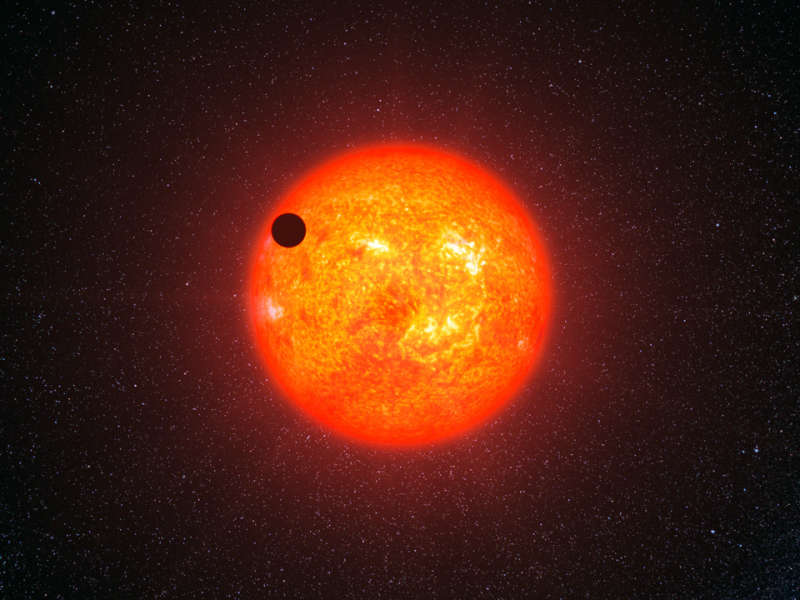
|
Credit & Copyright: ESO, L. Cal├ada
Explanation:
Might this distant planet hold water?
Actually, given how close
Gliese 1214b is to its parent
star, any water, if it exists, would surely be in the form of steam.
In the
above artist's illustration, the super-Earth Gliese 1214b is imagined passing
in front of its parent star, creating a mini-eclipse that alerted humanity to its
presence.
Gliese 1214b, also designated
GJ 1214b, has been designated
a
super-Earth because it is larger than the
Earth but smaller a planet like
Neptune.
The entire Gliese 1214 planetary system is of the closest known systems to our Sun,
located only 42 light years away.
The parent star, Gliese 1214 is a slightly smaller and
cooler version of our Sun.
Recent observations
from the
Subaru telescope in Hawaii found very little
scattering of blue light from the parent star by the planet.
This appears
most consistent with a planet that has a watery atmosphere -- although it is
still possible that
the super-Earth has clouds so thick that little of any color of light was scattered.
Detecting water on
exoplanets is important partly because most
lifeforms on Earth need water to survive.
Follow APOD on:
Facebook
(Daily)
(Sky)
(Spanish)
or Google Plus
(Daily)
(River)
|
January February March April May June July August September October November December |
| |||||||||||||||||||||||||||||||||||||||||||||||||||||||
NASA Web Site Statements, Warnings, and Disclaimers
NASA Official: Jay Norris. Specific rights apply.
A service of: LHEA at NASA / GSFC
& Michigan Tech. U.
Based on Astronomy Picture
Of the Day
Publications with keywords: extrasolar planet - water
Publications with words: extrasolar planet - water
See also:
- APOD: 2025 September 8 ┴ IRAS 04302: Butterfly Disk Planet Formation
- APOD: 2025 September 7 ┴ All the Water on Planet Earth
- APOD: 2024 July 8 ┴ Exoplanet Zoo: Other Stars
- Temperatures on Exoplanet WASP 43b
- Epsilon Tauri: Star with Planet
- APOD: 2023 October 17 ┴ PDS 70: Disk, Planets, and Moons
- APOD: 2023 September 20 ┴ Methane Discovered on Distant Exoplanet
